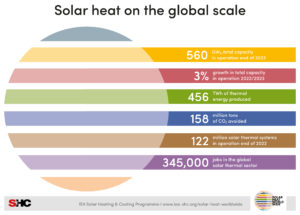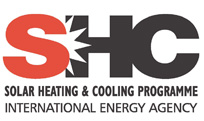USA: Solar Army Guide recommends optimal System Configurations
September 2, 2011
Dr.Alexander Zhivov
 Dr. Alexander Zhivov of the US Army Corps of Engineers presented the recently developed US Army Guide on Central Solar Water Heating Systems at the Intersolar North America conference in the middle of July 2011 (see attached presentation). The speaker is Senior Principal Investigator at the Engineer Research and Development Center (ERDC) of the US Army and Project Manager of the Solar Guide. The 321-page study analyses the potential and technical feasibility of domestic hot water production in US Army facilities, such as barracks, dining facilities, hospitals or gyms.
Dr. Alexander Zhivov of the US Army Corps of Engineers presented the recently developed US Army Guide on Central Solar Water Heating Systems at the Intersolar North America conference in the middle of July 2011 (see attached presentation). The speaker is Senior Principal Investigator at the Engineer Research and Development Center (ERDC) of the US Army and Project Manager of the Solar Guide. The 321-page study analyses the potential and technical feasibility of domestic hot water production in US Army facilities, such as barracks, dining facilities, hospitals or gyms.
Photo: US Army
The solar guides’ objectives are to develop design specifications and guidelines for solar water heating systems in Army and other government agencies’ facilities with a high demand in domestic hot water. The guide analyses experiences with large-scale solar installations primarily in Germany, Denmark and Austria. Quite a number of well-known German, Austrian and Danish companies and research institutions made their contribution to it.
The document’s highlight are its around 40 case studies of larger solar thermal systems up and running in Germany, Austria and the USA. On 142 pages, the guide depicts technical and economical frame conditions of solar thermal systems between 100 and 20,000 m2 of collector area. Other chapters discuss solar radiation and design specifications or draw economic comparisons of solar water heating systems across Europe. Zhivov listed five factors he considers crucial to successfully implementing a solar system:
- Experienced advisor/planner or turn-key supplier
- Experienced suppliers
- High-performance collectors designed for large-scale systems
- Low return temperature to district heating grid (30 to 40°C is normal)
- Optimised control system
The solar guide is a response to Section 523 of the Energy Independence and Security Act (EISA) 2007, which requires that at least 30% of the hot water demand of each new federal building (or during major renovation of an existing one) is covered by an SWH system. The following frame conditions are thought to be preferable:
- Average daily non-industrial hot water requirements should be 50 gallons (190 litres) or more.
- The site should be located in an area receiving an annual average of 4 kWh/m2/day or more.
- The system must be cost-effective during its life-cycle.
The “Central Solar Hot Water Systems Design Guide” will be published as a book by the American Society of Heating, Refrigerating and Air-Conditioning Engineers (ASHRAE).
More information:
Alexander Zhivov, Alexander.M.Zhivov@usace.army.mil


